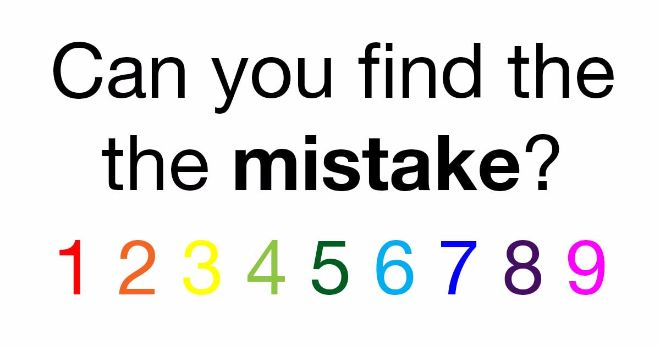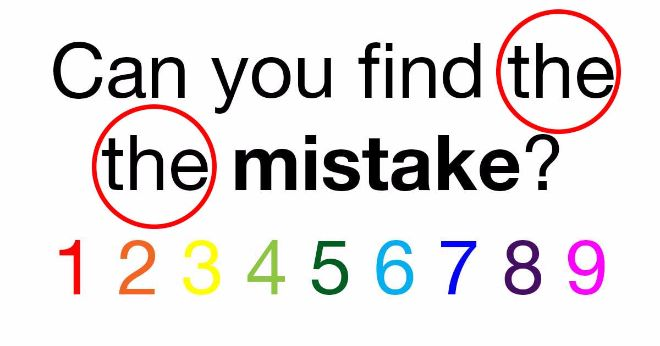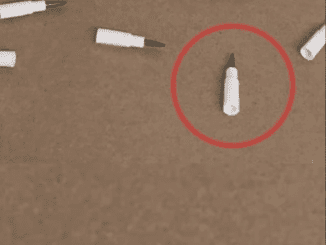Optical illusions and puzzles are fascinating tools for testing our perception and observation skills. While this isn’t your classic optical illusion, it’s a deceptively simple puzzle that’s just as tricky. This one is designed to challenge the way we view details in everyday text—something we often overlook. Are you ready to put your brain to the test and see if you can spot the mistake? Let’s dive into this quick brain workout!

The Challenge: Find the Mistake in the Text
First, let’s get to the challenge. Imagine a simple sentence right in front of you: “Can you find the the mistake?” Seems easy enough, right? But there’s a subtle error hiding within it. Many people spend minutes poring over such puzzles, inspecting every detail, and yet, the mistake is hidden in plain sight. So, let’s start by figuring out why this puzzle is trickier than it looks.
Why We Often Miss the Obvious
When you read familiar phrases or sentences, your brain tends to process them quickly. Instead of focusing on each word, you often skim over text in chunks, especially if it’s something common. This makes you miss small details that don’t align with what you expect to see.
In the case of this puzzle, the mistake lies in a repeated word—“the.” Most readers don’t notice the double “the” because their brains automatically correct it, filling in what they expect rather than what’s actually there. It’s a fascinating example of how our minds work and how we sometimes skip over the smallest details.
Step-by-Step Guide to Solving the Puzzle
Let’s walk through the steps that can help you find the hidden error:
1. Read the Text Aloud
- When you read text aloud, you’re more likely to notice mistakes than when you’re reading silently. Your voice naturally highlights repetition or errors that your eyes might miss. Try saying “Can you find the the mistake?” out loud. That extra “the” should become obvious when you hear it, even if you didn’t notice it visually.
2. Focus on Word Repetition
- Word repetition is a common trick in visual puzzles. We often expect the mistake to involve misspelled words or strange fonts, but here, the repetition is what’s tripping you up. When reading the text, look closely for any back-to-back words that don’t belong. It’s easy to skip over repeated words because they’re so small, but a second look can reveal them.
3. Ignore Distracting Elements
- Many visual puzzles are filled with colors, patterns, or numbers to distract you from the actual challenge. If you’re presented with extra elements like numbers or colored text, you might be tempted to look there for the mistake. In this puzzle, however, it’s all about the text. Forget the distractions and focus solely on the words.
The Solution: A Sneaky Repeated Word
Now, if you haven’t found it yet, here’s the answer: the phrase “Can you find the the mistake?” contains two consecutive “the” words. This type of mistake is easy to overlook because we’re accustomed to reading quickly and automatically filling in gaps. The human brain prioritizes speed over accuracy in reading, especially with short, familiar words like “the.”
Don’t believe me? Go back and look closely—you’ll see it there in the sentence, hiding in plain sight. It’s a little slip-up that can fool even the keenest observers!

Why This Puzzle Is So Effective at Fooling Us
This puzzle is effective because it plays on the way our brains process familiar language. We’re wired to make reading faster by skimming over common words and phrases. In doing so, we tend to overlook repeated words and small mistakes, particularly in text that follows expected patterns. This puzzle reminds us that while our brains are good at processing information quickly, they sometimes miss details along the way.
By learning to slow down and look carefully, you can catch things that might otherwise go unnoticed. This kind of puzzle isn’t just a test of your visual skills—it’s a reminder to pay attention, even to the things you think you already know.
Stretch Your Brain with More Puzzles Like This
Did you spot the mistake right away, or did it take you a few tries? Whether you found it instantly or had to look a couple of times, puzzles like this one are an excellent way to sharpen your observational skills. They challenge you to question what you’re seeing and rethink how you approach simple tasks.
If you enjoyed this puzzle, try sharing it with friends or family and see if they can spot the error. The beauty of a puzzle like this is its simplicity. Sometimes, the smallest details can be the hardest to find, and it’s always fun to watch others try their hand at solving it too.
Final Thoughts: Look Closely, Think Twice
Visual puzzles like this one serve as great reminders that we often miss what’s right in front of us. By slowing down and examining details, you can train your brain to notice the hidden layers within everyday things. So next time you’re reading something quickly, take a moment to pause and look closer—you might be surprised at what you’ve been missing.
The takeaway? Sometimes the simplest errors are the hardest to find. Whether you’re reading, writing, or just observing the world around you, remember to slow down and take a closer look. After all, you never know what hidden surprises might be waiting for you!


